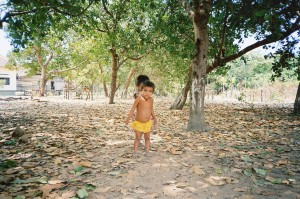We left the Khmers at their graceful old Chenla capital of Ishanapura (Roots of Angkor Wat, Part Two), but their kings took some massive steps between the handsome Chenla temples and Angkor’s epic constructions.
Key events happened around 800 that created one of the world’s great cultures. If Westerners had traveled this far east, their jaws would have smacked the ground.
Events after Ishanapura’s glories are murky, but the Chenla royal line fragmented. A king named Jayavarman 1 seems to have reunited the land and extended it, perhaps farther than Cambodia’s current borders.
And people around Angkor began to build big temples in the 8th century. They constructed a temple called Ak Yum that was in the form of a mountain.
But the pace of Angkor’s growth picked up in the 9th century. Several things converged to make it the center of a great empire for the next 650 years.
1. Nature was the biggest factor on Angkor’s side. It presides on a plain on the north shore of a lake called Tonle Sap. It’s bordered in the north by the Phnom Kulen hills. The mighty Mekong River flows 150 miles to the east. Its source is the Himalayas. When snows melt, it swells into a torrent that surges into the river that Tonle Sap flows into, and forces its current to reverse. Water thus flows into the lake every fall and rises to inundate the plain. When it recedes in October and November, millions of fish are trapped within the locals’ reach. This seemed as miraculous as the Nile’s annual flooding.
2. The monsoon that comes around May must have also seemed divine. It arrives at the hottest time of the year and drenches the parched earth in a burst of potency and grace. The waters run down the Phnom Kulen hills and bathe Angkor’s plain. Kings who were associated with nature’s sudden bestowal of waters must have seemed like gods.
3. Many people were migrating from central Cambodia to the northwest, where Angkor is. Kings thus had a labor pool that swelled as graciously as the waters.
In What Wat, Part Two, we’ll see some creative things that Khmer rulers did to take full advantage of this convergence of nature and history.



Comments on this entry are closed.